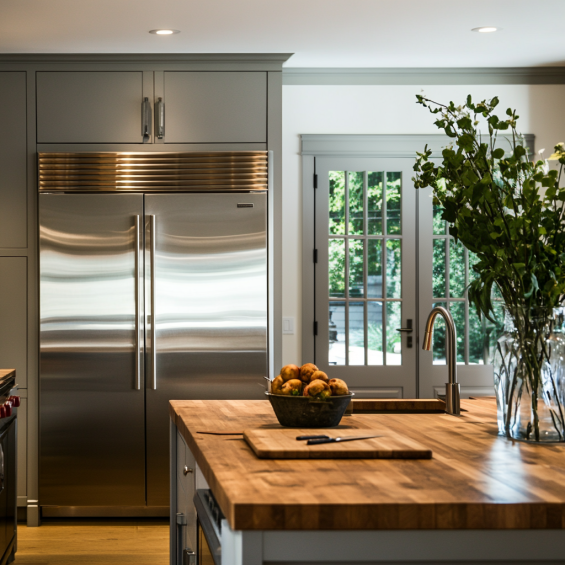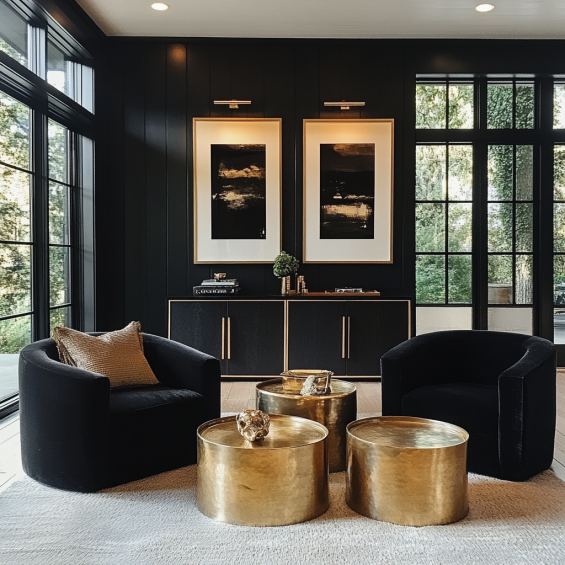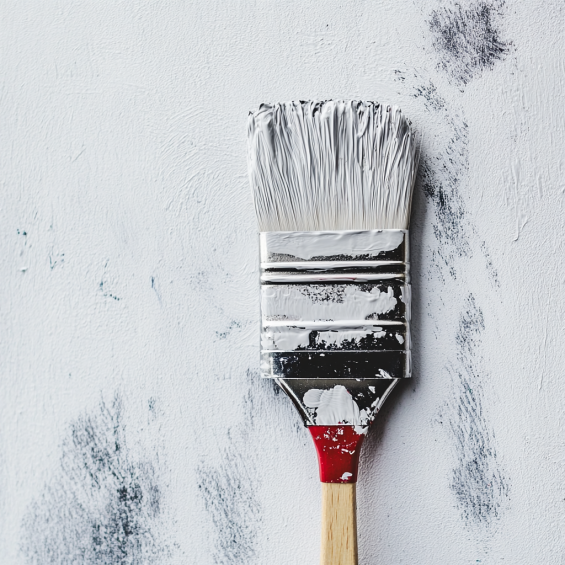While the home remodel budget calculator is a great tool, it will never replace getting actual estimates from licensed contractors.
Based On Local Idaho Market Rates
Project Basics
Labor Costs
Materials
Additional Costs
Budget Summary
Planning to renovate your home? Understanding the cost of your home renovation starts with accurate estimation. Our home remodel budget calculator helps you make informed decisions about your renovation project in 2025.
Home improvement costs continue to rise. And average home remodel costs vary significantly based on:
- Project scope and square footage
- Quality of materials
- Local labor rates
- Structural changes needed
- Timeline and seasonality
Are you considering a kitchen renovation, bathroom remodel, or whole house renovation cost? Then our estimation template provides detailed insights into every aspect of your project. This calculator helps you:
- Estimate the cost of materials and labor
- Plan your renovation budget
- Compare costs for different quality levels
- Calculate potential ROI for your investment
- Get accurate estimates based on current market rates
Ready to start planning? Use our interactive remodeling calculator above to get a comprehensive breakdown of your project costs.
Check current remodeling costs in your region outside of Idaho →
Understanding Renovation Costs in 2025: Breaking Down Your Home Improvement Budget

Ever wonder why your neighbor’s kitchen remodel cost half of what your cousin’s did? Let’s clarify home renovation costs and help you understand exactly what influences your bottom line. At True-Blue Construction, we believe in complete transparency when it comes to cost estimates.
The Big Four Cost Factors
1. Square Footage: Size Matters
Your home’s square footage isn’t just a number – it’s the foundation of your budget. Think of it like ordering pizza: the bigger the size, the higher the cost, but you might get a better deal per square foot!
| Size Range | Typical Cost Range Per Sq Ft |
|---|---|
| Small (< 500 sq ft) | $150-250 |
| Medium (500-1000 sq ft) | $100-200 |
| Large (1000+ sq ft) | $75-175 |
2. Room Type: Not All Spaces Are Created Equal
When you’re planning to renovate, remember that some rooms are naturally more expensive than others:
- Kitchen remodel: Highest cost (plumbing + appliances + cabinetry)
- Bathroom renovation: Second highest (plumbing + fixtures)
- Bedroom remodel: More affordable (mainly cosmetic)
- Living room: Budget-friendly (unless structural changes are needed)
3. Quality Levels: From Basic to Luxe
Just like cars, renovations come in different trim levels. Our budget calculator helps you explore each tier:
- Basic: Perfect for rental properties or quick updates
- Mid-range: Most popular for home’s value enhancement
- Luxury: When you want the cream of the crop
4. Location, Location, Location
Your ZIP code significantly impacts your renovation budget. Why? Because:
- Labor costs vary by region
- Material transportation costs differ
- Local permit requirements vary
- Market conditions fluctuate
Cost Categories That Surprise Most Homeowners
Here’s what catches many of our clients off guard (but won’t surprise you now!):
- Labor Costs (typically 40-60% of budget)
- Contractor fees
- Specialist labor (plumbers, electricians)
- HVAC modifications
- Material Costs (30-50% of budget)
- Base materials
- Finishing touches
- Unexpected replacements
- Hidden Costs (10-20% of budget)
- Permits and inspections
- Temporary storage
- Cleanup and disposal
Pro Tip: Always add a 20% buffer to your estimate for surprises. We’ve never met a renovation that didn’t have at least one surprise hiding behind a wall!
Need more specific numbers for your project? Reach out to us for current market rates!
Room-Specific Cost Breakdowns: What to Expect When Remodeling

Let’s dive into the nitty-gritty of different room renovations! We’ve seen everything from modest makeovers to dream-home transformations. Here’s your insider guide to room-specific remodeling costs in 2025.
Kitchen Remodel: The Heart of Your Home
Ah, the kitchen – where everyone congregates during parties (despite your best efforts to keep it clear!). A kitchen renovation is one of the most impactful changes you can make to your home.
Cost Breakdown by Quality Level
| Feature | Basic ($) | Mid-Range ($$) | Luxury ($$$) |
|---|---|---|---|
| Cabinetry | Stock | Semi-custom | Custom |
| Countertops | Laminate | Granite/Quartz | Exotic Stone |
| Appliances | Standard | Enhanced | Professional Grade |
| Flooring | Vinyl | Porcelain | Hardwood/Natural Stone |
Average Total Costs:
- Basic: $15,000 – $30,000
- Mid-Range: $30,000 – $65,000
- Luxury: $65,000 – $150,000+
Pro Tip: If you’re trying to save some money, consider keeping your existing layout. Moving plumbing and electrical can eat up your budget fast!
Bathroom Renovation: Your Personal Spa
The bathroom remodel – where function meets luxury. Nothing beats a well-designed bathroom for both daily routines and relaxation.
Essential Components & Costs
Basic Refresh ($5,000-$15,000):
– New toilet and vanity
– Fresh paint
– Updated lighting
– Basic tile work
Mid-Range Upgrade ($15,000-$35,000):
– Custom vanity
– Higher-end fixtures
– Glass shower doors
– Quality tile work
– Better lighting
Luxury Transformation ($35,000-$75,000+):
– Heated floors
– Smart toilets
– Custom tilework
– High-end materials
– Expanded space
Bedroom Remodel: Your Sanctuary
The bedroom remodel is often overlooked, but it’s where you spend a third of your life! Here’s what influences the cost to remodel your sleeping space:
Cost Factors to Consider:
- Size of the room
- Built-in storage solutions
- Lighting upgrades
- Flooring changes
- Window replacements
Average Costs: $1,500-$15,000 (depending on scope of your project)
Living Room: The Social Hub
Your living room renovation can range from a simple refresh to a complete transformation. Here’s what affects the overall costs:
Common Updates & Price Ranges:
- New paint: $400-$1,500
- Flooring: $1,500-$4,500
- Lighting: $500-$2,000
- Built-ins: $2,000-$5,000
- Structural changes (removing walls): $3,000-$10,000
The True-Blue Difference: Value-Adding Features
No matter which room you’re updating, certain improvements consistently add value:
- Energy-efficient upgrades
- LED lighting
- Better insulation
- Smart home features
- Universal design elements
- Wider doorways
- Accessible storage
- Better flow
- Quality materials that last
- Durable flooring
- Solid construction
- Premium fixtures
Remember: The key to a successful renovation isn’t focusing on the total price. Create spaces that work for your lifestyle while adding to your home’s value. Our estimation template above can help you nail down specific costs for your project, but every home is unique. Want to get a personalized look at your project? Let’s chat!
Planning Your Budget: Setting Yourself Up for Renovation Success
Ever heard the saying “Measure twice, cut once”? Well, when it comes to creating a realistic budget for your home renovation, we like to say “Plan twice, spend once!” Let’s dive into how to make your renovation budget work smarter, not harder.
Pre-Planning Phase: Getting Your Ducks in a Row
Before picking out fancy fixtures or that perfect backsplash, let’s talk about setting yourself up for success. Here’s what you need to consider when you’re planning to renovate:
Timing Is Everything
Best Times to Renovate:
✅ Winter: Contractors less busy, potential discounts
✅ Early Spring: Beat the rush, better availability
✅ Late Fall: End-of-year deals on materials
Avoid If Possible:
❌ Mid-Summer: Peak pricing, high demand
❌ Holiday seasons: Limited contractor availability
❌ During local building booms
Setting Realistic Expectations
Let’s be honest – watching home renovation shows can give us some… interesting ideas about costs and timelines. Here’s what you should actually expect:
| Project Type | Typical Timeline | Buffer Needed |
|---|---|---|
| Kitchen | 6-12 weeks | 2-3 weeks |
| Bathroom | 4-8 weeks | 1-2 weeks |
| Full Home | 3-8 months | 1 month |
Contingency Planning: The Safety Net You’ll Thank Us For
Remember Murphy’s Law? Well, it LOVES renovation projects! Here’s how to prepare:
The Magic Numbers
- 15-20% of total budget for unexpected issues
- 10% for design changes mid-project
- 5% for material price fluctuations
Common Surprise Costs That Pop Up
- Behind the Walls
- Outdated wiring
- Hidden water damage
- Structural changes needed
- Unexpected asbestos
- Permit Problems
- Additional inspections
- Code compliance updates
- Zoning issues
- Supply Chain Hiccups
- Material shortages
- Shipping delays
- Price increases
Pro Tip: When using our home renovation calculator, always add these contingencies to your base estimate. Better to be pleasantly surprised than unpleasantly stressed!
Risk Mitigation Strategies
Here’s how we can help our clients avoid budget surprises:
- Pre-renovation inspections
- Detailed material specifications
- Early permit applications
- Clear communication protocols
- Regular budget check-ins
True-Blue’s Budget Protection Plan
- Lock in material prices early
- Use phased payment schedules
- Document everything
- Keep a dedicated contingency fund
- Regular budget reviews
Remember, a well-planned renovation project is like a well-built house – it all starts with a solid foundation. Need help putting together your budget? Our team is just a call away!
Looking to get more specific with your numbers? Give us a call – it’s your first step toward a rock-solid renovation budget!
Financing Your Renovation: Smart Ways to Fund Your Dream Home
Let’s talk money! We know that figuring out how to pay for your home renovation is just as important as the changes. Here’s your guide to funding options that won’t keep you up at night.
Popular Financing Options For Your Remodel
1. Home Equity Solutions
Your house can be like a piggy bank for your renovation project! Here’s how:
| Financing Type | Best For | Typical Rates | Pro Tip |
|---|---|---|---|
| Home equity loan | Large projects | 6-9% | Fixed rates = predictable payments |
| HELOC | Phased renovations | 7-12% | Flexible drawing periods |
| Cash-out refinance | Whole-home remodels | 5-8% | Could lower your current rate |
2. Personal Financing Options
Not ready to tap into your home’s equity? No problem!
- Personal loans: Quick approval but with higher rates
- Credit cards: Good for smaller projects
- Construction loans: Specifically for major renovations
Return on Investment (ROI): Making Sure Your Investment Pays Off
Different projects bring different returns. Here’s what we’re seeing now:
High ROI Projects:
– Kitchen remodel: 70-80% return
– Bathroom renovation: 60-80% return
– Curb appeal upgrades: 75-85% return
– Energy efficiency improvements: 60-75% return
Market Impact Considerations
Before you max out your renovation budget, consider:
- Local market trends
- Neighborhood standards
- Home’s value ceiling
- Future buyer preferences
Pro Tip: Our cost estimate tool can help you balance your desired upgrades with potential returns!
True-Blue’s Smart Financing Tips
- Get multiple quotes before settling on a loan
- Check your credit score first
- Consider timing with market rates
- Don’t forget about tax deductions
- Keep some savings for emergencies
Remember: The best financing option is one that lets you sleep at night while creating the home of your dreams. Need help running the numbers? Our team can connect you with trusted financial partners who understand renovation lending.
Want to explore your options? Start with our remodeling calculator above to get a clear picture of your project costs, then let’s talk about making it happen!
Cost-Saving Strategies: Smart Ways to Stretch Your Renovation Dollar

Ready to save some money on your home renovation? We love helping homeowners get the most bang for their buck. Here’s your insider guide to savvy saving without sacrificing quality!
DIY Opportunities: When to Roll Up Your Sleeves
Not all renovation projects require professional expertise. Here’s what you can tackle yourself:
Safe DIY Projects:
Beginner Level:
– Interior painting
– Cabinet hardware replacement
– Light fixture updates
– Basic landscaping
Intermediate Level:
– Tile backsplash installation
– Vinyl flooring
– Basic carpentry
– Wallpaper installation
Advanced DIY:
– Floor installation (some types)
– Cabinet painting
– Trim work
– Basic electrical (switches/outlets)
Safety First: Leave plumbing, major electrical, and structural changes to the pros!
Material Selection: Smart Shopping Strategies
Timing Your Purchases
| Material Type | Best Time to Buy | Potential Savings |
|---|---|---|
| Appliances | Holiday weekends | 20-40% |
| Flooring | January/February | 15-25% |
| Cabinetry | End of quarter | 10-30% |
| Fixtures | Off-season | 15-35% |
Mix-and-Match Strategy
Want to know a designer secret? Mix high-end and budget materials strategically:
- Splurge on:
- High-visibility items
- High-wear surfaces
- Statement pieces
- Save on:
- Behind-the-scenes materials
- Easy-to-update items
- Bulk materials
True-Blue’s Money-Saving Pro Tips
- Use Our Calculator
- Our remodeling calculator helps identify areas for savings
- Compare different material grades
- See the impact of DIY vs. professional work
- Bulk Buying Benefits
- Group projects together
- Share orders with neighbors
- Look for contractor discounts
- Reuse and Repurpose
- Refinish instead of replacing
- Donate or sell unused materials
- Check salvage yards for unique finds
Hidden Ways to Save
Pro Tip: Sometimes spending a bit more upfront can save money long-term. Consider:
- Energy-efficient upgrades
- Quality over quantity
- Timeless over trendy
- Low-maintenance materials
Need help figuring out where to save and where to splurge? Let our team help you create a balanced budget that makes the most of every dollar! After all, smart spending is part of our blueprint for success.
Working with Professionals: Your Guide to Hiring the Right Team
Ready to bring in the pros for your home renovation? Smart move! While DIY can save money, some projects need expert hands. Here’s True-Blue Construction’s guide to building your dream team.
Hiring Contractors: Finding Your Perfect Match
The Vetting Process
Must-Have Checklist:
✅ Licensed and insured
✅ Strong local references
✅ Experience with your project type
✅ Clear communication style
✅ Detailed cost estimates
✅ Written contracts
Check out a full contractor vetting checklist here!
Red Flags to Watch For
- Pressure to decide immediately
- No physical business address
- Requests large upfront payments
- Won’t provide references
- Unclear or verbal-only quotes
Quote Comparison: Beyond the Bottom Line
When reviewing contractor bids, consider:
| Factor | What to Look For | Why It Matters |
|---|---|---|
| Scope | Detailed breakdown | Prevents misunderstandings |
| Timeline | Realistic scheduling | Affects living arrangements |
| Materials | Quality specifications | Impacts longevity |
| Payment | Clear schedule | Protects both parties |
Working with Designers: When to Bring in the Creative Pros
When to Hire a Designer:
- Complex layout changes
- Multiple room coordination
- Custom features needed
- Structural changes planned
- High-end finishes desired
True-Blue is a design-build contractor. We can help with both!
Cost vs. Benefit Analysis
Pro Tip: A good designer can actually help you save money by:
- Avoiding costly mistakes
- Maximizing space efficiency
- Suggesting cost-effective alternatives
- Negotiating with suppliers
- Preventing expensive changes mid-project
The True-Blue Difference
At True-Blue Construction, we’ve built strong relationships with the best local professionals. Our renovation project teams include:
- Certified contractors
- Licensed architects
- Interior designers
- Specialty craftsmen
- Project managers
Need help assembling your renovation dream team? Our estimation template includes professional fees, and we’re happy to connect you with our trusted network of experts. Let’s make your renovation journey smooth sailing!
Remember: The right team makes all the difference between a stressful renovation and a successful transformation. Ready to start? Let’s talk about your vision!
Project Management: Keeping Your Renovation on Track
Ever wonder how we keep your home renovation running smoother than a freshly sanded floor? At True-Blue Construction, we’ve mastered the art of project management. Let’s peek behind the curtain!
Timeline Planning: When Should You Start?
Seasonal Sweet Spots
Spring (March-May):
– Perfect weather for exterior work
– Contractors more available
– Better natural light for color choices
Fall (September-November):
– Lower material costs
– Comfortable working conditions
– Beat the holiday rush
Project Sequencing Magic
Pro Tip: The order of operations can make or break your renovation project:
- Day 1-2: Demo and structural changes
- Day 3-7: Rough-ins (plumbing, electrical, HVAC)
- Week 2-3: Walls and ceilings
- Week 3-4: Flooring and trim
- Final Week: Fixtures and finishing touches
Budget Tracking Made Easy
True-Blue’s 3-Point Tracking System
| Phase | What to Track | Tools We Use |
|---|---|---|
| Planning | Initial estimates | Detailed renovation calculations |
| Active | Daily expenses | Digital tracking app |
| Completion | Final reconciliation | In-depth cost reports |
Documentation: Your Best Friend
Keep these handy throughout your project:
- Contractor communications
- Material receipts
- Change orders
- Inspection reports
- Progress photos
Ready to get started? Let’s make your renovation dreams a reality!
FAQs About Home Renovations and The Home Remodel Budget Calculator
Got questions? We’ve got answers! Here are the most common questions our True-Blue Construction team hears about home renovation costs and planning.
Your Top Questions Answered
Q: How accurate are home renovation calculators?
Our budget calculator typically lands within 85-90% accuracy for initial estimates. However, final costs can vary based on specific material choices and site conditions. The more we can know about your specific project, the more accurate our estimate will be!
Q: What’s the typical ROI for different remodels?
Kitchen: 70-80%
Bathroom: 60-80%
Basement: 65-75%
Exterior: 60-85%
Q: Should I renovate all at once or in phases?
It depends on your budget and lifestyle! While all-at-once renovations can be more cost-effective, phased renovation projects might be easier on your daily life.
Q: How do I prioritize different projects?
Focus on:
- Essential repairs
- Structural changes
- High-ROI improvements
- Cosmetic updates
Q: What hidden costs should I prepare for?
Always budget extra for:
- Permits and inspections
- Temporary housing, if needed
- Unexpected repairs
- Design adjustments
Need more specific answers? Our team is just a call away!